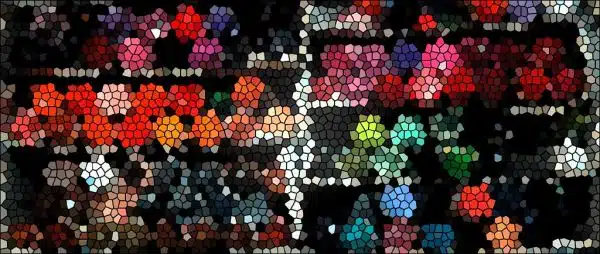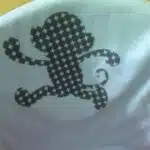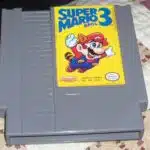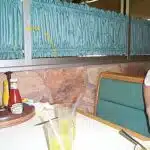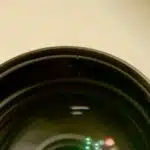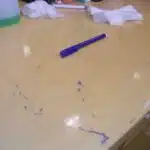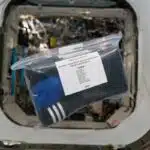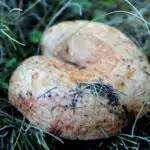Crayons are a staple in every household with young children, as they provide hours of creativity and entertainment. However, the aftermath of those creative moments can be a daunting task for parents and caregivers. The colorful mess left behind by crayons on various surfaces can be challenging to remove without causing damage or discoloration. As a cleaning expert, I have compiled a comprehensive guide on how to remove crayon stains from every surface, leaving your home spotless and vibrant once again.
Whether it is walls, floors, clothes, or furniture, removing crayon stains requires patience and careful attention to detail. With the right tools and techniques at hand, you can tackle the toughest stains with ease. This article will provide you with practical solutions that will help you get rid of crayon marks without damaging your surfaces or leaving any residue behind. So if you’re ready to learn how to say goodbye to stubborn crayon stains for good, keep reading!
Understanding Crayon Stains
Crayon stains can be a headache for any homeowner. Understanding the common causes of these stains is essential in preventing them from happening in the first place. The most common causes of crayon stains are children’s playtime, accidental contact on walls and furniture, and melted wax.
To prevent crayon stains from happening, it is important to encourage children to use coloring books or sheets of paper instead of drawing on walls or furniture. Placing mats or protective covers on surfaces can also help prevent accidental marks. In addition, keeping crayons away from heat sources can prevent melting and dripping onto surfaces.
While prevention is key, accidents do happen. Knowing how to properly remove crayon stains can save you time and money in the long run. In the next section, we will discuss preparing for the cleaning process to effectively remove crayon stains from every surface in your home.
Preparing For The Cleaning Process
- When attempting to remove crayon stains from any surface, it is important to gather the necessary supplies before beginning the cleaning process.
- An effective cleaning solution should be chosen based on the surface material and the severity of the stain.
- Supplies such as sponges, rags, and gloves should be gathered to ensure safe and effective cleaning.
- A variety of different cleaning solutions may be required depending on the level of difficulty of the stain removal.
Gather Supplies
To successfully remove crayon stains from every surface, it is imperative to gather all the necessary supplies before beginning the cleaning process. The first item on your supplies list should be a container of white vinegar, which is an effective and natural cleaning agent that can break down the waxy residue left behind by crayons. You’ll also need a clean cloth or sponge for applying the vinegar solution, as well as a scraper tool or plastic knife to gently scrape away any excess crayon marks.
In addition to vinegar and scraping tools, gathering materials such as baking soda and dish soap can also aid in removing stubborn crayon stains. Baking soda can be used to create a paste that will help lift crayon marks from hard surfaces like walls and countertops, while dish soap can be mixed with warm water to create a soapy solution for wiping down furniture and upholstery. Other helpful supplies include rubbing alcohol for removing wax from carpet fibers and cotton swabs for tackling small or intricate areas.
By gathering all the necessary supplies ahead of time, you’ll be prepared to tackle any type of crayon stain on any surface with confidence. With the right tools at your disposal, you’ll be able to quickly and effectively remove even the toughest of stains without causing damage to your home’s surfaces or fabrics. So take some time to gather your materials before starting the cleaning process – your efforts will pay off in the end!
Choose Cleaning Solution
Choosing the right cleaning solution is essential in successfully removing crayon stains from surfaces. Understanding different stain types can help determine which cleaning solution is best suited for the job. For instance, water-based stains may require a different approach than oil-based ones.
When dealing with water-based stains like crayons, using a mild detergent or dish soap mixed with warm water can be effective. This solution can be used to clean surfaces like walls and furniture without causing damage or discoloration. However, for oil-based stains, solvents like rubbing alcohol or mineral spirits may be necessary.
It’s important to note that not all cleaning solutions are suitable for all surfaces. Certain materials like leather or delicate fabrics require special care and attention when choosing a cleaning solution. Always read the manufacturer’s instructions before applying any cleaning product to avoid damaging the surface.
In conclusion, choosing the right cleaning solution is crucial in removing crayon stains effectively without causing damage to surfaces. Understanding different stain types and their corresponding cleaning solutions will help you achieve optimal results. Always remember to read the manufacturer’s instructions before applying any cleaning product and exercise caution when dealing with delicate materials.
Removing Crayon Stains From Walls
As we begin the cleaning process, it’s essential to understand that removing crayon stains from various surfaces requires different techniques. Walls, floors, and furniture all have different properties, which means that a unique approach is necessary for each one. However, before we proceed with the actual cleaning process, it’s crucial to prepare the area beforehand. This step will ensure that the surface is clean and ready for treatment.
Now that we’ve prepared for the cleaning process let’s focus on removing crayon stains from walls. When it comes to walls, using heat treatment is an effective way of getting rid of stubborn crayon marks. Begin by heating up a damp cloth and rubbing it on the affected area until the stain disappears. If the stain persists after several attempts, try applying WD 40 or another similar product to remove any remaining traces.
- Five tips for removing crayon stains from walls:
- Always test a small area first.
- Use a soft cloth when applying heat treatment.
- Avoid using harsh chemicals that can damage your walls.
- Be patient and persistent in your efforts.
- Hire a professional if you’re unsure about how to proceed.
As a cleaning expert, my goal is to help you keep your home looking its best. Whether you’re dealing with crayon stains on walls or floors, there are always solutions available. By following these tips and being proactive in your approach towards cleaning, you can maintain a beautiful and welcoming environment for yourself and your loved ones. In the next section, we’ll discuss how to remove crayon stains from floors without damaging them.
Removing Crayon Stains From Floors
To remove crayon stains from floors, it is important to first identify the type of flooring material. For hardwood or laminate floors, using a heat gun can be an effective method for removing wax stains caused by melted crayons. Simply hold the heat gun about six inches away from the stained area and move it back and forth until the wax begins to melt. Then, use a clean cloth to wipe away the melted wax.
If your floors are tiled or made of concrete, using a vinegar solution can help remove crayon stains without damaging the surface. Mix equal parts white vinegar and water in a spray bottle and apply it directly onto the affected area. Let it sit for several minutes before wiping it away with a clean cloth. For tough stains, you may need to repeat this process several times.
Prevention is key when it comes to keeping your floors free of crayon stains. Encourage children to color only on paper or designated surfaces, and consider placing a protective barrier like a tablecloth or placemat under art projects. If an accident does happen, act quickly to prevent the stain from setting into the floor.
Next up: Removing Crayon Stains from Clothes
Removing Crayon Stains From Clothes
Crayon stains can be a difficult and messy problem to tackle on clothes. To successfully remove crayon stains, it is important to determine the source of the stain and the type of fabric the stain is on. Various stain removal techniques can be used to remove crayon stains, such as the use of a dry cleaning solvent, a pre-treatment solution, or a laundry detergent. Depending on the severity of the stain, the use of a brush and a pre-treatment solution may be necessary to fully remove the crayon from the fabric.
Removing Crayon From Clothes
Removing crayon stains from clothes can be quite a challenge, but with the right approach, it is entirely possible to get rid of these stubborn marks. When dealing with crayon stains on clothing, it is essential to act quickly and avoid letting the stain set in. Some effective laundry detergents for crayon stains include Tide, Persil, and OxiClean. These products are specially designed to break down tough stains and can help remove even the most stubborn crayon marks.
If you don’t have access to laundry detergent, there are quick fixes for removing crayon stains on the go. One such remedy is using rubbing alcohol or vinegar. Simply apply a small amount of either substance onto the affected area and allow it to sit for a few minutes before washing the garment as usual. Another option is using baking soda mixed with water to form a paste that can be applied directly onto the stain.
In conclusion, removing crayon stains from clothes requires patience and persistence. Whether you opt for an effective laundry detergent or a quick fix remedy like rubbing alcohol or vinegar, it’s essential to act quickly and avoid letting the stain set in. Following these tips will help ensure that your clothes remain free from unwanted markings and stay looking fresh and clean.
Stain Removal Techniques
When it comes to removing crayon stains from clothes, prevention is key. Encouraging children to use crayons on paper or other designated surfaces can help avoid unwanted markings on clothing. However, accidents do happen, and when they do, it’s essential to act quickly to prevent the stain from setting in.
Stain prevention aside, there are various non-toxic cleaning solutions that can effectively remove crayon stains from clothes. One such solution is using a mixture of baking soda and vinegar. Simply mix equal parts of baking soda and vinegar to form a paste and apply it directly onto the affected area. Allow it to sit for a few minutes before washing the garment as usual.
Another effective non-toxic cleaning solution for removing crayon stains is using lemon juice. Squeeze fresh lemon juice onto the stained area and allow it to sit for 10-15 minutes before washing the garment as usual. Lemon juice has natural bleaching properties that can help break down tough stains while leaving your clothes smelling fresh.
In conclusion, removing crayon stains from clothes requires quick action and an effective cleaning solution. By utilizing non-toxic cleaning solutions like baking soda, vinegar, and lemon juice, you can remove these stubborn marks without harming your clothes or exposing yourself or your family to harmful chemicals. Remember to act quickly when dealing with crayon stains and always follow care instructions on clothing labels when washing garments.
Removing Crayon Stains From Furniture
Furniture is an essential part of any living space, and keeping them clean and stain-free is a top priority for many. Crayon stains are a common occurrence on furniture, especially in households with children. Removing crayon stains from furniture can be challenging, but it is not impossible with the right tools and techniques.
Before attempting to remove crayon stains from furniture, it is crucial to identify the type of material your furniture is made of. Different materials require different methods of cleaning. If your furniture is made of wood, you can use a soft cloth and some warm water to wipe off the crayon marks gently. Once the surface is dry, polish the wood using a high-quality wood polish to restore its shine.
If you have upholstered furniture like sofas or chairs, removing crayon stains can be more complicated. To protect your upholstery from damage during cleaning, start by blotting up as much wax as possible with paper towels or a clean cloth. Next, apply a small amount of rubbing alcohol onto the stain and gently scrub it with a soft-bristled brush until the stain disappears. For tough stains that won’t budge easily, you may need to use an upholstery cleaner specifically designed for removing wax or ink stains.
In conclusion, keeping your furniture free from crayon marks requires quick action and appropriate cleaning techniques. By following these simple steps for polishing wood and protecting upholstery while removing crayon stains from furniture, you can keep your home looking clean and beautiful without sacrificing comfort or style. In the next section, we’ll discuss how to remove crayon stains from wooden surfaces using safe and effective methods that won’t harm your furniture’s finish or integrity.
How To Remove Crayon Stains From Wood
After successfully removing crayon stains from furniture, it’s time to tackle the next challenge: wood surfaces. The good news is that most wood surfaces can withstand some degree of scrubbing and cleaning. However, before embarking on any cleaning process, it’s essential to consider the type of wood surface you are dealing with. For instance, you should avoid sanding wood surfaces that have a delicate finish or coating as this can cause irreversible damage.
To remove crayon stains from wood surfaces, start by scraping off any excess wax using a plastic scraper or credit card. Next, use a soft-bristled brush to gently scrub the affected area with warm soapy water. If this doesn’t work, try mixing baking soda with water until it forms a paste and apply it directly onto the stain. Let it sit for about ten minutes before washing off with warm soapy water.
Remember to always test the cleaning solution on an inconspicuous part of the wood surface first before applying it widely. This will help prevent further damage to the surface in case the solution reacts negatively. With these simple steps, you can remove crayon stains from almost any wood surface without causing harm or damage.
In conclusion, removing crayon stains from wood surfaces requires some care and consideration but is entirely achievable with proper techniques and materials. Remember never to sand delicate finishes or coatings and instead opt for gentle methods like baking soda paste for stubborn stains. With these tips at your disposal, you can confidently restore the beauty of your wooden surfaces without leaving behind unsightly crayon marks.
How To Remove Crayon Stains From Carpet
Like a colorful masterpiece splattered across your floor, crayon stains on carpets can be an eyesore. But fear not, with the right carpet cleaning techniques and cleaning products, you can easily remove these stubborn stains.
Firstly, it’s important to act quickly when dealing with crayon stains on carpets. The longer you wait, the harder it will be to remove the stain. Start by scraping off as much of the crayon wax as possible using a plastic scraper or credit card. Be careful not to damage the carpet fibers in the process.
Next, apply a small amount of rubbing alcohol or white vinegar onto a clean cloth and gently dab at the stain. Avoid scrubbing too hard as this may cause damage to the carpet fibers. If the stain persists, try using a specialized carpet cleaner specifically designed for removing crayon stains. These cleaners are available at most hardware stores and are formulated to penetrate deep into the fibers of your carpet and lift out any remaining color.
When it comes to removing crayon stains from carpets, prevention is always better than cure. One way to prevent future staining is by placing an old towel or sheet underneath your child’s art projects. This will help catch any stray marks or spills before they have a chance to set into your carpet fibers.
Moving forward, let’s explore how to remove crayon stains from glass surfaces without leaving behind any unsightly marks or scratches.
How To Remove Crayon Stains From Glass
After successfully removing crayon stains from your carpet, it’s time to tackle the next challenge: how to remove crayon stains from glass surfaces. This can be a tricky task, but with the right cleaning methods and household hacks, you’ll have those crayon marks wiped away in no time.
Firstly, try using a vinegar solution to remove the crayon stains. Mix equal parts of water and white vinegar in a spray bottle and generously apply it onto the stained area. Let it sit for a few minutes before wiping it away with a clean cloth or paper towel. Another household hack is using baking soda mixed with water as a paste on the stained area. Rub gently with a cloth or sponge before wiping it off.
If the above methods don’t work, there are commercial products specifically designed for glass stain removal that you can purchase at most stores. Make sure to follow the instructions carefully and test on an inconspicuous area first before applying it on the affected surface.
In summary, removing crayon stains from glass surfaces requires patience and experimenting with different cleaning methods until you find what works best for you. Remember to always test any new cleaning product on an inconspicuous area first and use caution when handling glass surfaces.
Next up, we will discuss how to remove crayon stains from metal surfaces.
How To Remove Crayon Stains From Metal
When removing crayon from metal surfaces, it is important to start by gently scraping off any excess residue with a soft cloth or a plastic scraper. Next, use a solution of warm water and dish soap to wipe the surface of the metal, taking care to avoid any abrasive scrubbing. Once the surface has been wiped clean, apply a cleaner designed for metals to further remove any remaining crayon stains. Finally, rinse the metal with clean water and dry completely to finish the cleaning process.
Removing Crayon From Metal
When it comes to removing crayon stains from metal surfaces, using solvents may be the most effective method. Solvents such as rubbing alcohol, mineral spirits and acetone can break down the wax in crayons and lift it off the metal surface. However, caution must be exercised when using solvents as they can be highly flammable and toxic. Always wear gloves and work in a well-ventilated area.
For those who prefer alternative methods for removing crayon from metal surfaces, there are a few options available. One method involves using a hair dryer to melt the wax and then wiping it away with a cloth or paper towel. Another method is to apply peanut butter or baking soda mixed with water to the affected area and gently scrubbing with a soft-bristled brush. While these methods may not be as effective as using solvents, they are safer and less toxic.
In conclusion, whether you choose to use solvents or alternative methods for removing crayon stains from metal surfaces, always exercise caution and follow proper safety procedures. With patience and persistence, even stubborn crayon stains can be removed from metal surfaces with ease.
Cleaning Metal With Crayon Stains
When it comes to maintaining metal surfaces free of crayon stains, prevention is key. One way to prevent crayon stains on metal surfaces is by using a protective coating, such as wax or oil. This coating will make it easier to wipe away any crayon marks that may appear, preventing them from sticking onto the surface permanently.
However, if crayon stains have already made their mark on a metal surface, there are effective ways to remove them. Using solvents such as rubbing alcohol and acetone can dissolve the waxy residue and lift it off the metal surface. It’s important to exercise caution when handling solvents as they can be toxic and flammable, so proper safety procedures should always be followed.
Another effective method for removing crayon stains from metal surfaces involves using baking soda mixed with water and gently scrubbing the area with a soft-bristled brush. This method is safer than using solvents and can still effectively remove stubborn marks. With these helpful tips, you can keep your metal surfaces looking clean and spotless without worrying about unwanted crayon marks.
How To Remove Crayon Stains From Plastic
Upon discovering crayon stains on plastic surfaces, it can be frustrating to figure out how to remove them effectively. However, there are several methods that can help you get rid of these stubborn marks without damaging the plastic. One popular technique is using heat treatment.
Using heat treatment involves using a hair dryer or a heat gun to melt the crayon wax and wipe it away with a cloth. This method works best for hard plastics such as PVC pipes or toys. It is important to use caution when applying heat as excessive heat can cause the plastic surface to warp or crack. Test a small area first before proceeding with this method.
If using heat treatment is not an option, there are alternative solutions for removing crayon stains from plastic. These include rubbing alcohol, baking soda paste, or even toothpaste. Apply these substances onto the affected area and scrub gently with a soft-bristled brush until the stain disappears. Be sure to rinse well with water and dry with a clean cloth.
| Method | Materials Needed | Steps |
|---|---|---|
| Heat Treatment | Hair Dryer or Heat Gun, Cloth | 1) Test small area first 2) Apply heat directly onto stain 3) Wipe melted wax away |
| Rubbing Alcohol | Rubbing Alcohol, Cloth | 1) Pour rubbing alcohol onto cloth 2) Rub gently onto stain 3) Rinse well with water and dry |
| Baking Soda Paste | Baking Soda, Water, Bowl, Spoon, Cloth | 1) Mix baking soda and water into a paste in bowl 2) Apply paste onto stain 3) Scrub gently with cloth until stain disappears |
Incorporating these techniques into your cleaning routine can save you time and money in the long run. Now that you know how to remove crayon stains from plastic surfaces effectively using either heat treatment or alternative solutions such as rubbing alcohol or baking soda paste, you can keep your plastic items looking clean and new. In the next section, we will discuss how to remove crayon stains from upholstery.
How To Remove Crayon Stains From Upholstery
Crayon marks on upholstery can be frustrating to remove. However, with the right approach and cleaning solution, it is possible to eliminate them completely. One effective method for removing crayon stains from upholstery is using heat treatment.
Using heat treatment involves placing a clean white cloth over the affected area and then applying heat through an iron. It is important to ensure that the iron is set to a low heat setting before placing it on top of the cloth. The heat will cause the wax from the crayon to transfer onto the cloth, thereby removing it from the upholstery fabric.
Choosing the right cleaning solution is also crucial when removing crayon stains from upholstery. It is advisable to use a mild detergent or a specialized cleaning product designed for removing stubborn stains. Before applying any cleaning solution, always test it on an inconspicuous area of the upholstery to ensure that it does not cause damage or discoloration.
- Begin by scraping off any excess wax residue using a plastic scraper.
- Apply a small amount of cleaning solution onto a white cloth and gently dab on the affected area.
- Blot dry with another clean white cloth until all traces of crayon have been removed.
By following these steps, you can successfully remove crayon stains from your upholstery without causing further damage or discoloration. In the next section, we will discuss natural remedies for removing crayon stains in case you prefer an alternative approach.
Natural Remedies For Removing Crayon Stains
Lemon juice is a natural remedy for removing crayon stains as the citric acid found in lemons can help to break down the wax from the crayon. Baking soda is another natural remedy for removing crayon stains, as its absorbent properties can help to draw the stain out of the surface. Toothpaste is a natural remedy for removing crayon stains due to its abrasive properties which can help to scrub away the stain. Vinegar is a natural remedy for removing crayon stains, as the acetic acid in vinegar can help to break down the wax from the crayon.
Lemon Juice
There’s nothing more frustrating than finding crayon stains on your favorite clothes, furniture or walls. But don’t worry, there are natural remedies that can help you remove them. One of these is lemon juice, which has been used for centuries as a cleaning agent due to its acidic properties.
The uses of lemon juice in removing crayon stains are diverse. It can be used on all types of surfaces, including fabrics, wood and walls. Simply mix equal parts of lemon juice and baking soda to create a paste and apply it directly on the stain. Let it sit for a few minutes before scrubbing off with a soft-bristled brush or cloth. The lemon juice will break down the wax in the crayon while the baking soda acts as an abrasive to lift the stain.
Aside from being effective in removing crayon stains, there are other benefits of using lemon juice as a cleaning agent. It is an eco-friendly alternative to harsh chemicals and has a refreshing scent that can leave your home smelling clean and fresh. What’s more, it is readily available in most households and is affordable compared to commercial cleaning products.
In summary, lemon juice is a versatile natural remedy that can effectively remove crayon stains from various surfaces while offering additional benefits such as eco-friendliness and affordability. Try this solution at home next time you encounter pesky crayon marks – your surfaces will thank you!
Baking Soda
When it comes to natural remedies for removing crayon stains, baking soda is another household item that can come in handy. Beyond its use as a leavening agent for baking, baking soda is also an effective cleaning agent due to its mild alkaline properties. In fact, many people use baking soda for other household cleaning tasks such as unclogging drains, deodorizing carpets and even polishing silverware.
As an alternative method for removing crayon stains, you can create a paste using equal parts of baking soda and water. Apply the paste onto the stain and let it sit for a few minutes before wiping it away with a damp cloth. The abrasive texture of the baking soda helps to lift the wax while the alkaline nature helps break down the pigments of the crayon.
Aside from being effective in removing crayon stains, baking soda has other benefits as well. It is non-toxic and safe to use around children and pets. It is also affordable and readily available in most households, making it an accessible solution for everyday cleaning needs.
In conclusion, when it comes to natural remedies for removing crayon stains, both lemon juice and baking soda are effective options that have multiple benefits beyond just cleaning. By incorporating these household items into your cleaning routine, you can save money while also promoting eco-friendliness and safety in your home.
Preventing Future Crayon Stains
To prevent future crayon stains, it’s crucial to take preventive measures. One of the most effective ways is to keep crayons out of reach from children. Store them in a locked cabinet or high shelf where kids can’t access them without adult supervision. Alternatively, encourage your kids to only use crayons on designated surfaces such as paper or coloring books.
Another long-term solution to avoid crayon stains is to switch to washable crayons. These are designed to be easily wiped off surfaces and don’t leave lasting marks. You can also opt for non-toxic and water-soluble crayons that are safe for children and less likely to cause damage.
Incorporating these preventive measures and long-term solutions into your routine will save you time, money, and frustration in the future. By taking an active approach towards avoiding crayon stains, you’ll be able to maintain a clean and organized home effortlessly. A spotless home is within reach with just a few simple changes in your habits and mindset.
Conclusion: A Spotless Home Is Within Reach
A spotless home may seem like a pipe dream, but with the right cleaning hacks and time saving tips, it can be achieved. One of the most important things to remember when cleaning is to work smarter, not harder. This means using products and techniques that will get the job done quickly and efficiently.
One time saving tip is to create a cleaning schedule. This way, you can break down your cleaning tasks into manageable chunks and tackle them on a regular basis. Another tip is to keep your cleaning supplies organized so you can easily find what you need when you need it. And finally, invest in quality cleaning products that are effective at removing stains and grime.
Incorporating these tips into your cleaning routine will help you achieve a spotless home without spending hours on end scrubbing and polishing. So take some time to evaluate your current cleaning methods and see where you can make improvements. With a little effort and some smart strategies, a clean home is well within reach!
Conclusion
Crayon stains can be a nightmare for any homeowner, but fear not as removing them is not impossible. Understanding the type of surface and the nature of the stain is important before starting the cleaning process. Preparing the cleaning area by gathering tools such as a scraper, baking soda, or vinegar will make removing crayon marks from walls, floors, clothes, or upholstery easier.
For walls and floors, warm soapy water or rubbing alcohol can do wonders in removing crayon marks. Clothes require extra attention as they are more delicate; using dish soap or laundry detergent combined with baking soda should do the trick. Upholstery requires gentle care by using rubbing alcohol or vinegar to remove stubborn stains.
Natural remedies such as lemon juice or olive oil can also be used to remove crayon stains without using harsh chemicals. Preventing future crayon stains is also possible by setting boundaries for young children and investing in washable crayons.
In conclusion, a spotless home is within reach if you take the time to understand and prepare for crayon stain removal. As cleaning experts say “a clean home is a happy home,” so don’t let those pesky crayon stains bring you down. With patience and diligence, your surfaces will be looking good as new in no time!
Image Credits
- “Crayon stained glass special effect” by AS63 (featured)

